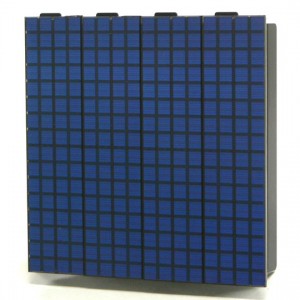
Look behind a television screen, a computer monitor or a mobile phone display and you’ll find an OLED. A what? An Organic Light Emitting Diode, that’s what. Simply put, an OLED is a light-emitting diode (LED) in which a film of organic compounds emit light in response to an electric current.
The technology was in the news this week when the world’s first spherical large-scale OLED screen was unveiled at Japan’s National Museum of Emerging Science and Innovation in Tokyo. The six-metre Geo-Cosmos Globe is made up of 10,362 OLED panels, each measuring 96 x 96 millimetres, that work together to project the movement of the Earth as captured through a meteorological satellite. The result is stunningly beautiful images of our planet at a resolution of more than 10 million pixels. A series of touch-screen computers, called Geo-Scope, allow visitors to interact with different parts of the globe and learn about natural phenomena like large scale weather movements. And Geo-Palette, an interactive mapping tool, lets users to create their own maps based on data about everything from language to climate to the world economy.

